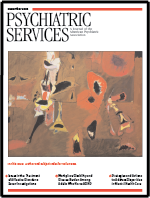A Comparison of Service Use and Costs Among Adults With ADHD and Adults With Other Chronic Diseases
Abstract
OBJECTIVE: This study compared health service use and costs among adults with attention-deficit hyperactivity disorder (ADHD) and adults with depression, diabetes, or seasonal allergic rhinitis (seasonal allergy). METHODS: Pharmacy and medical claims data from January 1, 1999, to December 31, 2001, were obtained from a large U.S. managed care plan. Patients were divided into one of four mutually exclusive cohorts (ADHD, depression, diabetes, or seasonal allergy) on the basis of their diagnosis or prescriptions. Age, gender, comorbid conditions, and type of dominant provider were compared for the four groups. Thereafter, general linear models with post-hoc multiple comparison tests were used to compare health service use and costs by site of service. RESULTS: The study population included 143,561 patients. The four mutually exclusive groups included 58,017 with depression, 45,479 with diabetes, 33,272 with a seasonal allergy, and 6,793 had ADHD. Comorbid mental health conditions occurred with significantly greater frequency among patients with ADHD and among those with depression than among patients in the other groups. Patients with ADHD and those with depression received care from a mental health provider significantly more often than those with diabetes or a seasonal allergy. Patients with ADHD had fewer average outpatient, inpatient, and emergency department visits than patients with depression or diabetes, and office visit frequency for patients with ADHD was significantly different from that of patients with a seasonal allergy. Annual total costs were lowest among patients with a seasonal allergy ($2,743), which were not significantly different than the costs for patients with ADHD ($3,020). CONCLUSIONS: Adult ADHD poses an economic burden that is less than that of depression or diabetes but greater than that of a seasonal allergy.



